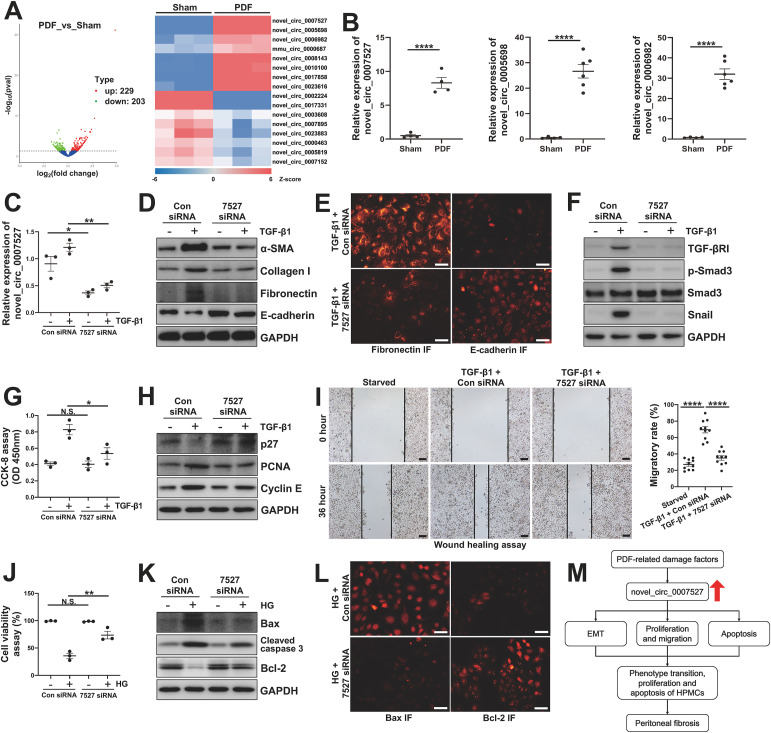
Differential expression profile of circular RNAs in mouse peritoneum with peritoneal fibrosis and the potential regulatory role of novel_circ_0007527


CircRNAs, a novel type of endogenous non-coding RNAs (ncRNAs), are typically produced by back-splicing from exons of protein-coding genes, which are characterized by a covalently closed structure with neither 5′ to 3′ polarity nor a poly(A) tail.1 On the one hand, circRNAs are involved in the regulation of a variety of important biological processes, such as apoptosis, proliferation, migration, and inflammatory responses.1 On the other hand, the relationship between circRNAs and several fibrotic diseases has been reported.2 However, the functions of circRNAs in peritoneal fibrosis (PF) are still unknown. Herein, we first reported the circRNA expression profile in the high glucose peritoneal dialysis fluid (HG-PDF)-induced PF mouse model, and the differentially expressed circRNAs between the PDF group and Sham group. The Gene ontology (GO) enrichment and Kyoto Encyclopedia of Genes and Genomes (KEGG) analysis and the construction of circRNA–miRNA–mRNA network provided an overview of the role of circRNAs in the development of PF. In addition, novel_circ_0007527 was up-regulated in the in vitro model of injured peritoneal mesothelial cells. Knockdown of novel_circ_0007527 inhibited peritoneal mesothelial epithelial–mesenchymal transition (EMT), proliferation, migration, and apoptosis. Therefore, our study provides novel avenues for PF research from the view of circRNAs.
